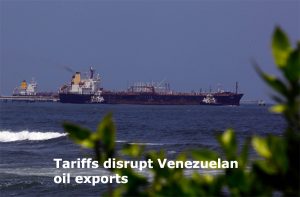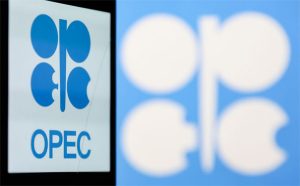
Natural-gas bucks the energy downtrend to finish higher.
Myra P. Saefong and Williams Watts, Market Watch
SAN FRANCISCO/NEW YORK
EnergiesNet.com 09 01 2022
Oil futures began September under pressure Thursday, with prices settling at their lowest in about two weeks.
Chinese authorities locked down Chengdu, a city of 21 million, in an effort to control the spread of COVID-19, contributing to concerns about economic growth — and demand for oil.
Price action
- West Texas Intermediate crude for October delivery CL.1, 1.84% CL00, 1.84% CLV22, 1.86% fell $2.94, or 3.3%, to settle at $86.61 a barrel on the New York Mercantile Exchange.
- November Brent crude BRN00, 2.05% BRNX22, 2.04%, the global benchmark, lost $3.28, or 3.4%, to $92.36 a barrel on ICE Futures Europe. Both front-month Brent and WTI contracts settled at their lowest since Aug. 16, according to Dow Jones Market Data.
- Nymex, October gasoline RBV22, 3.92% fell 1.9% to $2.3853 a gallon.
- October heating oil HOV22, 1.82% dropped 2.9% to $3.5612 a gallon.
- October natural gas NGV22, -3.74% rose 1.5% at $9.262 per million British thermal units.
Market drivers
Worries about global demand were amplified as Chengdu, a city in southwestern China, faced a lockdown in response to a surge in COVID-19 cases. China’s controversial zero-COVID policy has often served as a cap on crude prices in 2022, limiting demand from the world’s largest oil importer.
A private gauge of China’s factory activity fell into contraction territory in August also as Covid flare-ups and a power crunch caused by the extreme heat and drought hampered the country’s economic recovery. The Caixin China purchasing managers index declined to 49.5 in August from 50.4 in July, falling below the 50-point mark that separates contraction from expansion, according to data released by Caixin Media Co. and S&P Global on Thursday.
The weakness in the Chinese Caixin manufacturing PMI reading has “further confirmed that oil demand is going to be hit by a more adverse environment in the coming days,” said Naeem Aslam, chief market analyst at AvaTrade, in a Thursday note.
Crude futures are coming off a brutal August, which saw WTI drop more than 9% and Brent slide 12%. Front-month U.S. and global crude price benchmarks logged a third monthly decline in a row, their longest such losing streak since the first half of 2020.
Also see: Here’s what could reverse gasoline’s 11-week price decline
China’s woes add to concerns about the global economic growth outlook as the Federal Reserve and major central banks move to aggressively rein in inflation, threatening to spark a major slowdown or even a recession.
Traders also await Monday’s monthly meeting of OPEC+ — the Organization of the Petroleum Exporting Countries and their allies.
Read: Why talk of an OPEC+ output cut has failed to revive oil prices
“The big question among investors and traders is if OPEC will do something about supply cuts while the prices have started to rattle their cage once again,” said Aslam.
“It is highly unlikely that we will see OPEC sitting on its hands and doing nothing about the oil supply,” he said. “Soft demand is likely to meet with tighter supply, and this means that in the coming days, we are likely to see higher oil prices, and the new norm for oil prices could be between $90 to $100.”
On Nymex, natural gas bucked the downtrend among energy futures to finish higher.
“Some warmer than normal temperatures that have boosted demand, though the return of some production from maintenance has countered some of the impact,” said Robbie Fraser, manager, global research & analytics at Schneider Electric.
The U.S. Energy Information Administration reported on Thursday that domestic natural-gas supplies rose by 61 billion cubic feet for the week ended Aug. 26. That compared to an average forecast for an increase of 56 billion cubic feet from analysts polled by S&P Global Commodity Insights.
marketwatch.com 09 01 2022.












